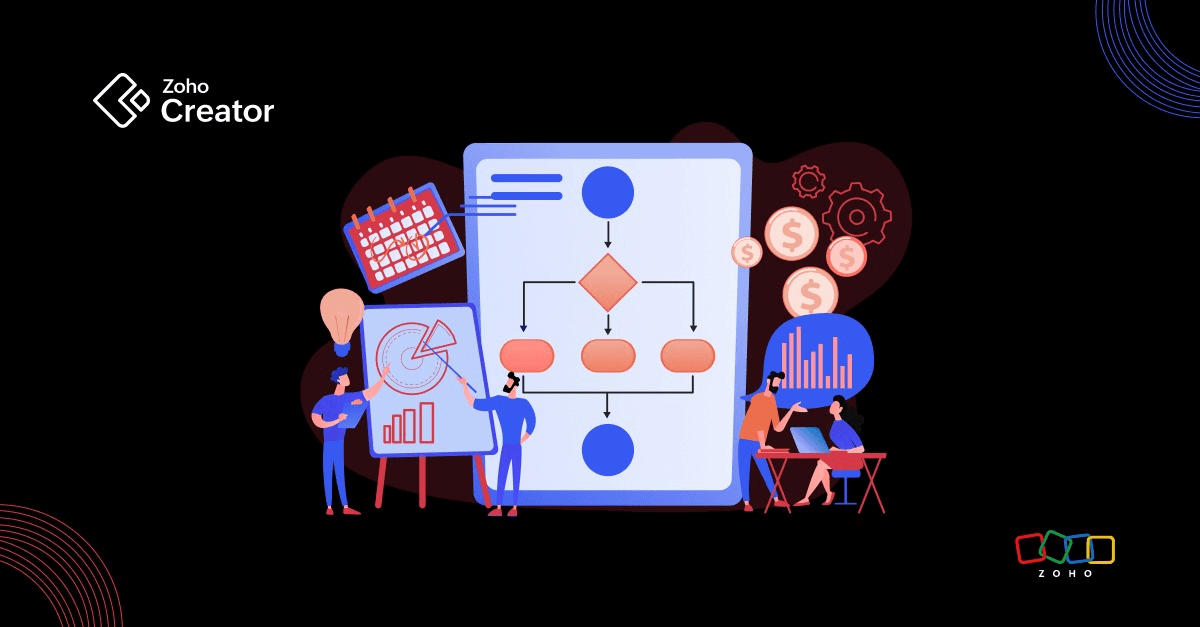- HOME
- Know Your Tech
- Barriers to Professional Services Automation (PSA) adoption—and how to overcome them with low-code
Barriers to Professional Services Automation (PSA) adoption—and how to overcome them with low-code
- Last Updated : April 20, 2023
- 830 Views
- 5 Min Read
Professional services automation (PSA) has helped service delivery teams around the world tackle project management challenges and maximize their market potential. In a recent blog, we looked at some of those challenges and how PSA solutions helped service-based businesses address them.
When implemented strategically, automation software helps companies future-proof their operations. However, strategic implementation of a PSA solution is not a one-step endeavor and must be carried out in phases. Many professional service companies have yet to implement or take advantage of PSA systems because of barriers unique to the industry and the modern digital workplace.
Let's look at some of the major obstacles that stand in the way of PSA adoption—and how you can break them down.
Understanding the 4 major barriers to Professional Services Automation (PSA) adoption
Top barriers to PSA adoption:
- Poor organizational change management
- Financial problems
- The limitations of off-the-shelf PSA solutions and re-engineering difficulty
- A lack of expertise around automation and the need for training
A bare-bones change management strategy (or none at all)
Forrester Research came to the conclusion that change management is the biggest barrier to digital adoption. Competitive professional service companies with an automation-first mindset need proactive change management strategies that scale with their automation plans. Technological change is one thing, but navigating the people and process changes that come with a company-wide PSA system deployment is key to positive business outcomes.
A centralized organizational change management (OCM) system tasked with updating ongoing processes and aligning the organization—including departments and functions—with outcomes and goals for automation can cut through organizational silos. Adopting a quality PSA solution that offers change management support can alleviate confusion by integrating with existing apps that the workforce is used to and help with implementing minimal-risk changes. An OCM system speeds up PSA adoption—and helps people and technology finally start working together.
How low-code can help
If your business relies on rigid, legacy systems, change management can be laborious, expensive, and time-consuming. Any process change on a traditional hard-coded system requires the IT team to manually make the update and revise the accompanying documentation and files. Unless your existing enterprise ecosystem is flexible and easy to use, it's difficult to ensure that your business processes are constantly in sync with market requirements.
Low-code platforms, however, are designed to accommodate change while maintaining configuration control and risk management. Low-code development makes it easy to deploy new code faster and modify and adapt apps to suit new environments. A PSA system built on a low-code platform can improve and realign processes and automate core processes while integrating well with existing ecosystems.
Limited funds
Global enterprises on the digital bandwagon find the lack of available budget to be another major barrier to larger IT investments. Adopting a professional services automation tool can appear too costly, especially for many SMEs running on limited finances after the pandemic.
You can dodge most financial traps that come with committing to automation adoption by performing a thorough requirement evaluation, quantifying ROI and prioritizing processes based on the scope, to avoid impulsive purchases. When you allocate an adequate budget for a new PSA solution, you must understand its impact on your bottom line and be able to justify its ROI. Additionally, a tech stack—read "out-of-date legacy systems"—that you can't modernize and upgrade on time and requires expensive upkeep adds to tech debt.
An automation platform that doubles as a money-saving expert, and doesnt break the bank to implement—while generating quantifiable ROI—is your best bet if you're looking to adopt automation technology. A new PSA system that aligns with the greater organizational strategy of your company is key to unlocking tangible value in your investment.
How low-code can help
Low-code platforms make creating and implementing new business apps more accessible to companies, even on limited finances. Once you build your PSA system on a low-code platform, you can measure and objectively define the system's impact on your ROI to justify IT spend.
Low-code also helps you fast-track legacy modernization to upgrade your tech stack so your core applications aren't choking on the volume of processes. A platform vendor with a transparent pricing policy also empowers you to build your PSA solution with all the features that you require without any hidden expenses. You can build this PSA system to align with your existing tech ecosystem and overall organizational strategy.
The limitations of off-the-shelf PSA solutions and reengineering difficulty
Conventionally, businesses are more inclined to purchase commercial off-the-shelf software (COTS) simply because it's a hassle-free way to address their business needs. Although both ready-made and custom PSA solutions require implementation, process optimization, and other change management efforts, off-the-shelf PSA software demands some serious upfront work that often incurs major costs.
COTS solutions are mass-produced and hence relatively low cost. But they generally include only a range of generic functionality, often including features you don't need, with limited integration capability and customizability—on top of not being a good strategic fit.
So organizations opting to purchase off-the-shelf PSA software must find one that fits most, if not all, of their feature needs, and integrates with their existing IT infrastructure. Homegrown solutions are the superior choice for businesses looking for custom functionality that ties in seamlessly with a large business ecosystem.
How low-code can help
The limitations of COTS PSAs often cause businesses to adapt their processes and workflows to fit the tool when it should actually be the other way around. This is because ready-made PSAs are created to solve a specific current problem; their purpose is not to evolve with your business processes or expand to meet future requirements.
You can use an enterprise low-code platform to build a one-of-a-kind, fully tailored PSA solution without the barriers of cost and time to implement. And unlike a COTS system, you're investing in a solution that can adapt and evolve with your business processes and requirements.
A lack of expertise around automation and the need for training
Competitive professional service companies undergoing DX often leave behind a trail of failed automation projects due to skill shortages. Conventional automation software implementation, utilization, maintenance, and upgrading require a large amount of specialist and niche programming expertise.
Automation environments are hard-coded, and the code is developed beforehand. A well-trained workforce equipped with advanced IT and programming skills is required to adopt automation technology without investing in additional expensive technical resources.
Another option would be to use a highly intuitive, code-free graphical environment to develop your PSA system, with the domain experts you already have working at the heart of the project.
How low-code can help
Low-code reduces the amount of coding required to automate a business process or workflow. Business teams can use a visual drag-and-drop interface to build automation workflows without developer assistance or dependence on the IT team for every iteration/update. As a result, development requires less technical expertise, resources, and overall code than building a solution in-house from scratch or customizing a legacy stack component. Low-code solutions for automation also allow for faster scaling and cost less.
What does your professional services firm need to succeed?
The success of process automation in an enterprise is firmly tied to its adoption. Even the most powerful PSA system can fail without full user adoption, and low-code platforms provide business users with a great entry point into process automation. If your organization has experienced any of the barriers mentioned in this article and you have experienced a lag in adopting PSA systems, maybe it's time to give low-code a chance.
 Rashmi Sasi
Rashmi SasiProduct marketer at Zoho Creator, where she researches and creates content about all things low-code. Writer by day, reader by night, into eclectic books and long sentences, sci-fi enthusiast, and novice painter. Dislikes character limits.



